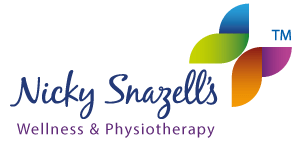Ten Tips To Achieve Your Fitness Goals
First, decide what your fitness goals are!
Patients often ask me, once their general fitness is much better, “How do I take the next step to train towards a specific sport?” Firstly, any current injuries should be assessed by an experienced physiotherapist or sports therapist. Then you need to decide on your goals. What are your goals? Stronger heart and lungs? A fit-looking body? To win at sport? To live longer?
Furthermore, you need to decide:
- which sports you want to concentrate on
- how vigorously you want to compete
- how long you want to be able to compete.
Everyone should exercise, but you need to set your personal goals of fitness and your own unique set of aims, as this will determine the most appropriate exercise and productive time you can spare for training. A fitness assessment with a personal trainer can establish your personal fitness goals and an injury prevention program can be formulated to attain your goals:
• Enhanced cardiovascular ability.
• Improved stamina and endurance.
• Better agility, flexibility, and balance.
• Stronger muscles and core strength.
• Slimmer body.
• Stronger bones.
• Clearer thinking and happier moods.
Ten Tips to Achieve Your Fitness Goals
1) Measure your heart rate just after vigorous exercise for 5 seconds, then after another minute for another 5 seconds. Multiply both by 12, then subtract one from the other. This gives you your speed of recovery, which is an indicator of your cardio fitness. As you get fitter, both your oxygen capacity and the ability of your enzymes to remove lactic acid will increase.
2) Mix up slow and fast pace in all activities. Athletes carry out long slow and short fast interval training for a good reason; the slow pace builds stamina and teaches the body how to cope with and eliminate lactic acid, as well as enabling muscles to store more glycogen for prolonged exercise.
3) Fast pace, on the other hand, comprises of short bursts of intense activity which boosts sugar metabolism and teaches the brain to co-ordinate the muscles at a faster pace, helping agility.
4) To avoid muscle injury due to tiredness, rest adequately as muscles need
48 hours to recover, plus good hydration and nutrition.
5) To achieve stronger muscles, lift a weight you can just manage between
8 and 12 lifts in about 50 seconds. Then, rest briefly between sets, as
lactic acid build-up will cause injury. Repeat. Rest a day in between. Add
2.5 kg to 5 kg maximum at each increase.
6) Exercised bones get stronger, so use resistance or weight-bearing exercises.
7) For a thinner body, sustained exertion will burn up calories and speed up the metabolic rate.
8) For a flexible body, complete slow, sustained stretches of 30 seconds when you are warm and pain-free. Stretch before your workout to reduce the chances of injury. Stretching after exercise reduces muscle soreness and promotes relaxation.
9) Clearer thinking is essential. Work out your pattern of mental alertness, the daily peaks and troughs. Plan a regular exercise program and see how it eliminates the ‘valleys’. Exercise-induced endorphins plus serotonin will reduce depression and pain.
10) For running, cycling and walking, get checked out biomechanically.
This means the alignment of foot joints to avoid knee pain, hip pain, and back pain.
A correct alignment will reduce wear and tear.
Do you need help in setting realistic goals, creating a plan and
ongoing help to get you there?
We Can Help
Call 01889 881488 Now.
Jean, Erica & Charlotte will be happy to help
